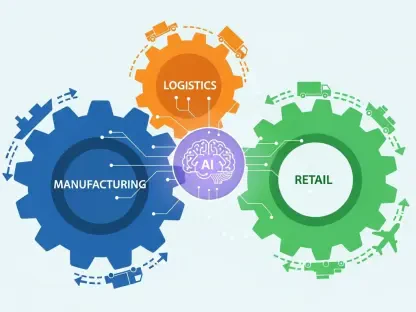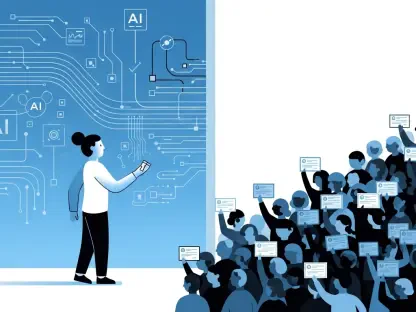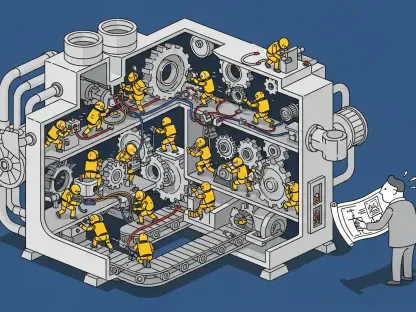In a world where digital transformation dictates the pace of business success, Anil Sharma stands out as a visionary technologist reshaping the very foundation of software architecture with his innovative concept of Intelligent Microservices powered by agentic-AI. This multi-patented innovator has identified and tackled the glaring inefficiencies of traditional enterprise infrastructure, offering a forward-thinking solution that promises to redefine how organizations operate in an increasingly complex digital landscape. Sharma’s approach transforms static microservices into autonomous, adaptive systems capable of meeting real-time demands, positioning him as a key figure in addressing the challenges of scalability and resilience. His work not only highlights the limitations of conventional models but also sets a new benchmark for what technology can achieve when infused with intelligence and adaptability. This exploration delves into the core of Sharma’s groundbreaking contributions, shedding light on how his ideas are poised to revolutionize the tech industry.
Transforming Software with Intelligent Microservices
Sharma’s concept of Intelligent Microservices marks a significant departure from the traditional microservices architecture that, while once groundbreaking for modularity, often falters under the weight of intricate integrations and fragmented data streams. Outlined in his influential book, these microservices are reimagined as independent agents that operate with a level of autonomy previously unseen in enterprise systems. They can make decisions, collaborate with other components, and adapt to changing conditions without the need for constant human input. This innovation directly confronts issues like technical debt and system inefficiencies, which have long plagued organizations striving to keep up with rapid market shifts. By providing a robust and flexible foundation, Sharma’s framework enables enterprises to navigate the complexities of digital transformation with greater confidence and efficiency, ensuring that their infrastructure evolves alongside their business needs.
The impact of Intelligent Microservices extends beyond mere technical upgrades, as they offer a strategic advantage in an era where adaptability is synonymous with survival. Unlike older systems burdened by rigid structures, these intelligent agents can dynamically respond to workload fluctuations and unexpected challenges, minimizing downtime and enhancing overall performance. This approach also reduces the operational overhead that often accompanies manual oversight, allowing businesses to allocate resources more effectively. Sharma’s vision addresses the urgent need for scalable solutions that can withstand the pressures of modern digital demands, setting a new standard for enterprise architecture. As companies grapple with the accelerating pace of change, this framework emerges as a critical tool for maintaining competitiveness, ensuring that technology serves as an enabler rather than a bottleneck in the pursuit of innovation.
Unleashing Potential Through Agentic-AI
Central to Sharma’s transformative work is the agentic-AI model, a cutting-edge approach that imbues microservices with adaptive learning capabilities and decentralized intelligence. This paradigm shift moves away from static, rule-based systems to create a network of intelligent agents that can self-optimize, identify anomalies in real-time, and align their operations with overarching business objectives. Importantly, human oversight remains integrated, ensuring that automation enhances rather than overrides human judgment. This model effectively dismantles data silos and fragile dependencies that often hinder traditional setups, fostering a seamless and responsive infrastructure. The result is a system that not only boosts performance but also keeps pace with the fluid dynamics of today’s market, offering businesses a way to stay agile amid constant change.
Agentic-AI also introduces a level of foresight into enterprise systems, enabling them to anticipate needs and adjust resources proactively rather than reactively. This predictive capability is a game-changer for industries where timing and precision are critical, as it minimizes disruptions and optimizes efficiency across the board. By allowing microservices to communicate and collaborate autonomously, Sharma’s framework creates an ecosystem where each component contributes to a cohesive whole, driving outcomes that align with strategic goals. This innovation reflects a deeper understanding of how technology must evolve to meet modern challenges, breaking free from the constraints of outdated methodologies. As digital environments grow more intricate, agentic-AI stands as a beacon of progress, offering a glimpse into a future where systems are not just tools but active participants in business success.
Innovations That Redefine Enterprise IT
Sharma’s technical contributions are cemented by a portfolio of six patents that address pivotal challenges in cloud computing and enterprise IT, showcasing his knack for turning complex problems into actionable solutions. Among these are advancements like Reverse Identity Federation, which ensures consistent user identity across distributed networks, and auction-based compute-sharing mechanisms that optimize workload distribution. Another standout is semantic fingerprinting with clustering techniques for log deduplication, slashing storage costs by as much as 90%. These patented technologies enhance system reliability, scalability, and cost-efficiency, providing tangible benefits for organizations operating at an enterprise level. Each invention reflects a meticulous approach to solving real-world issues, reinforcing Sharma’s reputation as a leader in driving technological progress.
These innovations are not just incremental improvements but rather foundational shifts that empower businesses to rethink their approach to infrastructure management. By addressing critical pain points such as resource allocation and data storage, Sharma’s patents lay the groundwork for systems that are both robust and economical, a rare combination in the tech sphere. The impact of these solutions is evident in their ability to streamline operations, reduce overhead, and improve performance metrics across diverse applications. This body of work underscores the importance of targeted innovation in an industry often overwhelmed by generic fixes, offering a blueprint for how technology can directly support business imperatives. As enterprises face mounting pressure to do more with less, Sharma’s contributions provide a lifeline, equipping them with tools to achieve sustainable growth and operational excellence.
Empowering People and Fostering Collaboration
A distinguishing feature of Sharma’s philosophy is the emphasis on a human-centric approach to technology, where AI serves as a catalyst for human creativity rather than a substitute for it. By automating repetitive and error-prone tasks in areas like DevOps, including system monitoring and orchestration, this approach frees engineers to concentrate on higher-value activities such as strategic planning and creative problem-solving. The focus is on enhancing human potential, ensuring that technology acts as a partner in innovation rather than a barrier. This perspective resonates deeply in an era where the balance between automation and human input remains a critical discussion, offering a refreshing take on how AI can elevate rather than diminish the workforce.
Complementing this human-focused mindset is Sharma’s advocacy for a collaborative culture within engineering teams, viewing excellence as a collective achievement rather than an individual pursuit. Emphasizing continuous learning and the value of creative friction, this ethos encourages environments where ideas are shared freely, and innovation emerges from interaction. Such a cultural shift is vital for sustaining long-term progress, as it nurtures a mindset of adaptability and openness to new perspectives. By championing collaboration, Sharma ensures that technological advancements are matched by a supportive framework where diverse talents converge to solve challenges. This dual focus on empowering individuals and building cohesive teams highlights a holistic vision that extends beyond code to the very fabric of how innovation is cultivated in the tech world.
Shaping the Future of Digital Ecosystems
Reflecting on Sharma’s contributions, it’s clear that his development of Intelligent Microservices and the agentic-AI framework marked a turning point in how enterprise infrastructure was perceived and implemented. His patented solutions tackled inefficiencies head-on, delivering measurable improvements in scalability and cost management that redefined industry standards. Moreover, his human-centric philosophy struck a chord, proving that technology could amplify rather than overshadow human ingenuity. The collaborative culture he championed also left a lasting imprint, fostering environments where innovation thrived through shared effort.
Looking ahead, the path forward involves embracing Sharma’s vision by integrating intelligent, adaptive systems into the core of business strategies. Enterprises should prioritize frameworks that balance automation with human insight, ensuring that technology remains a tool for empowerment. Investing in collaborative platforms and continuous learning will further solidify the foundation for sustained progress. As the digital landscape continues to evolve, adopting these principles offers a roadmap for navigating complexity with agility, ensuring that businesses not only keep up but lead the charge in shaping dynamic, responsive ecosystems.









